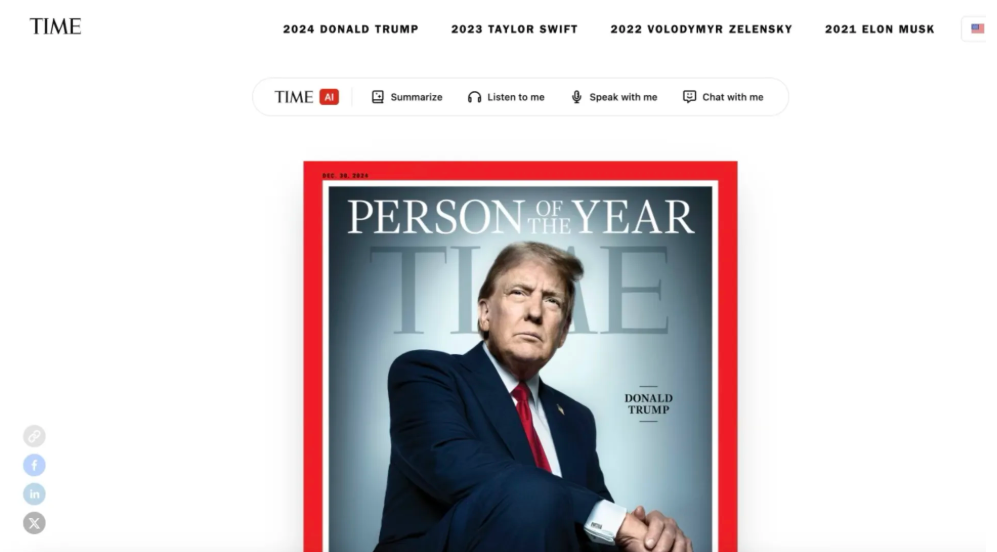
Paul Nicklen: A Reverence for Nature
Standing in front of any of Canadian photographer Paul Nicklen’s large-scale images in the current exhibition at Hilton Contemporary, one cannot help but be totally…
Thought Leader: Paul Nicklen

This piece is by WWSG exclusive thought leader, Sara Fischer.
Time unveiled a new AI chatbot Thursday alongside its annual Person of the Year announcement.
Why it matters: By debuting the bot with one of its most popular stories of the year, Time will be able to gather chatbot engagement data from millions of global readers at once.
State of play: The Time AI chatbot allows users to ask questions about the story, summarize it into digestible bits of different lengths, translate the text into different languages, or play audio versions of the copy.
How it works: The chatbot answers questions based on Time editorial content and general knowledge embedded in the large language model (LLM) the chatbot is built on.
Zoom in: Time hired Scale AI, a company that builds enterprise AI tools, to help create the chatbot.
Zoom out: In the future, Time hopes to bring the tool to more stories and functions across its entire website, making its journalism more accessible globally, Time chief operating officer Mark Howard told Axios.
At launch, the chatbot includes no advertising, but in the future it could become part of a sponsorship package offering.
The big picture: Several newsrooms have begun experimenting with building AI chatbots, but they haven’t had as much visibility as Time’s Person of the Year feature is likely to drive.
What to watch: Time plans to start deploying the chatbot to more content across its website in early 2025, Howard said.
Paul Nicklen: A Reverence for Nature
Standing in front of any of Canadian photographer Paul Nicklen’s large-scale images in the current exhibition at Hilton Contemporary, one cannot help but be totally…
Thought Leader: Paul Nicklen
Sara Fischer: International Fund for Public Interest Media looks to raise $150M
This piece is by WWSG exclusive thought leader, Sara Fischer. An international fund that supports independent media on Wednesday unveiled an ambitious plan to raise…
Thought Leader: Sara Fischer
Sara Fischer: Newspaper entrepreneur builds Jersey Shore news empire
This piece is by WWSG exclusive thought leader, Sara Fischer. Veteran newspaper banker and media operator James McDonald has launched a new company to consolidate…
Thought Leader: Sara Fischer

